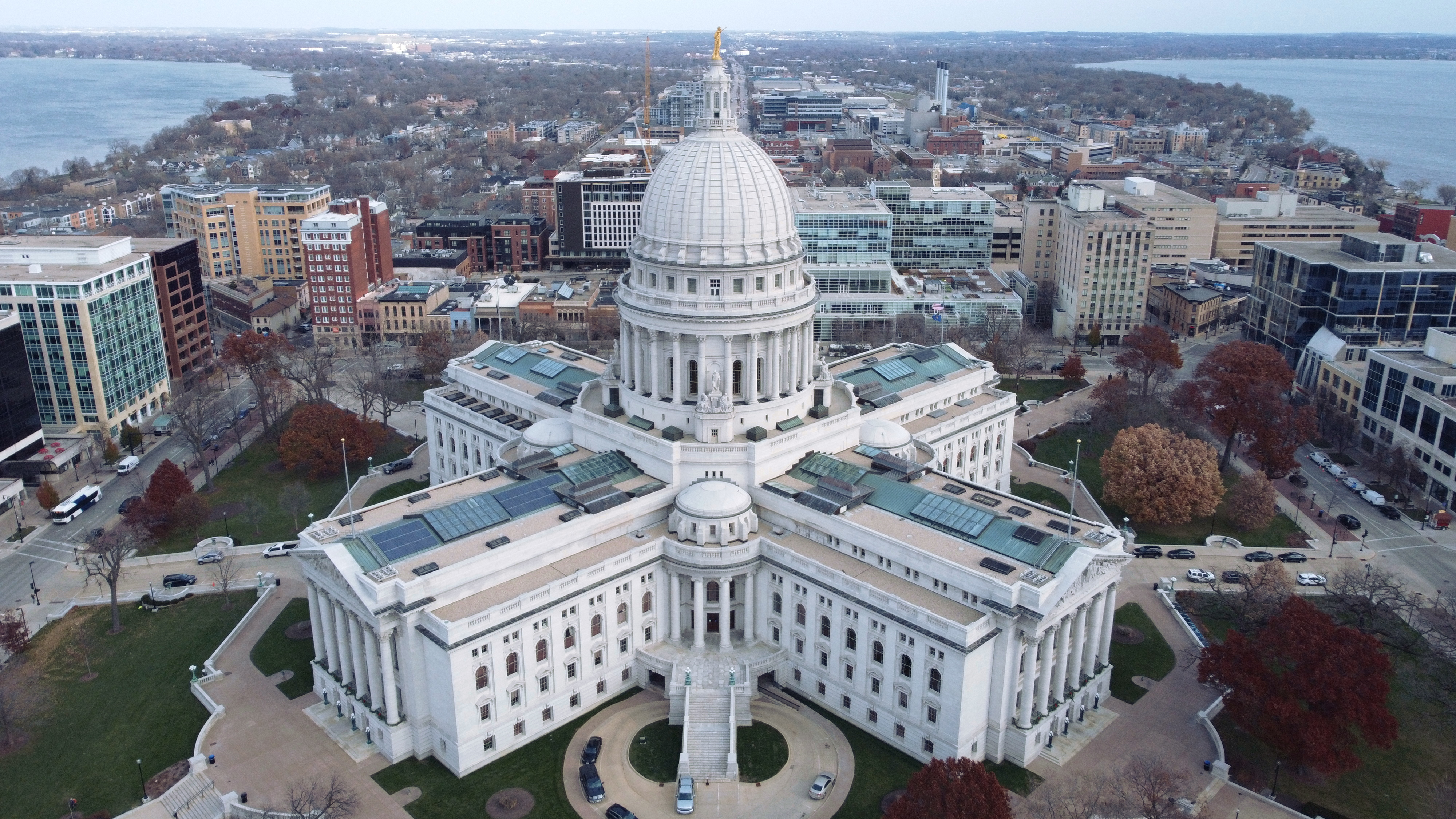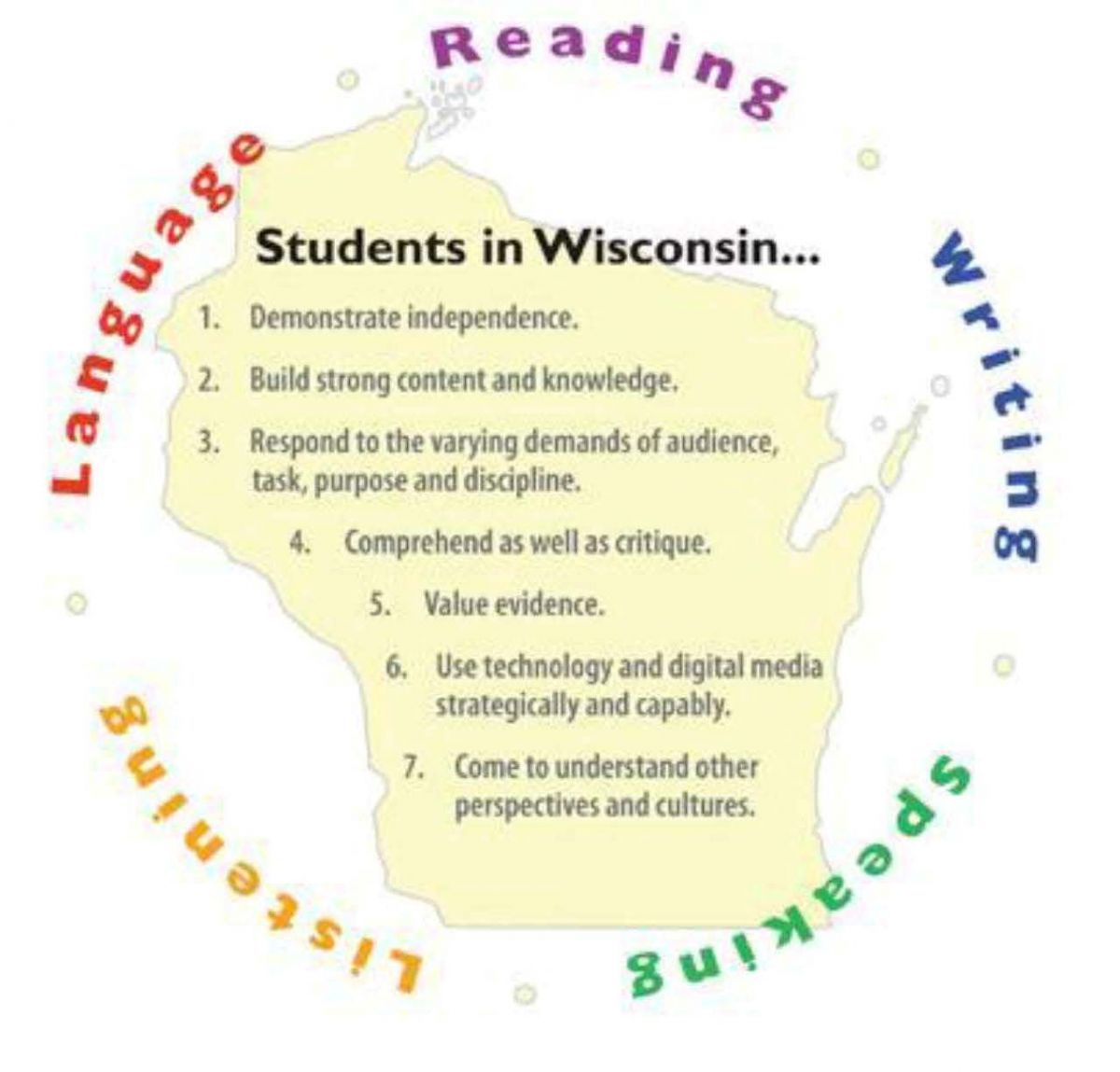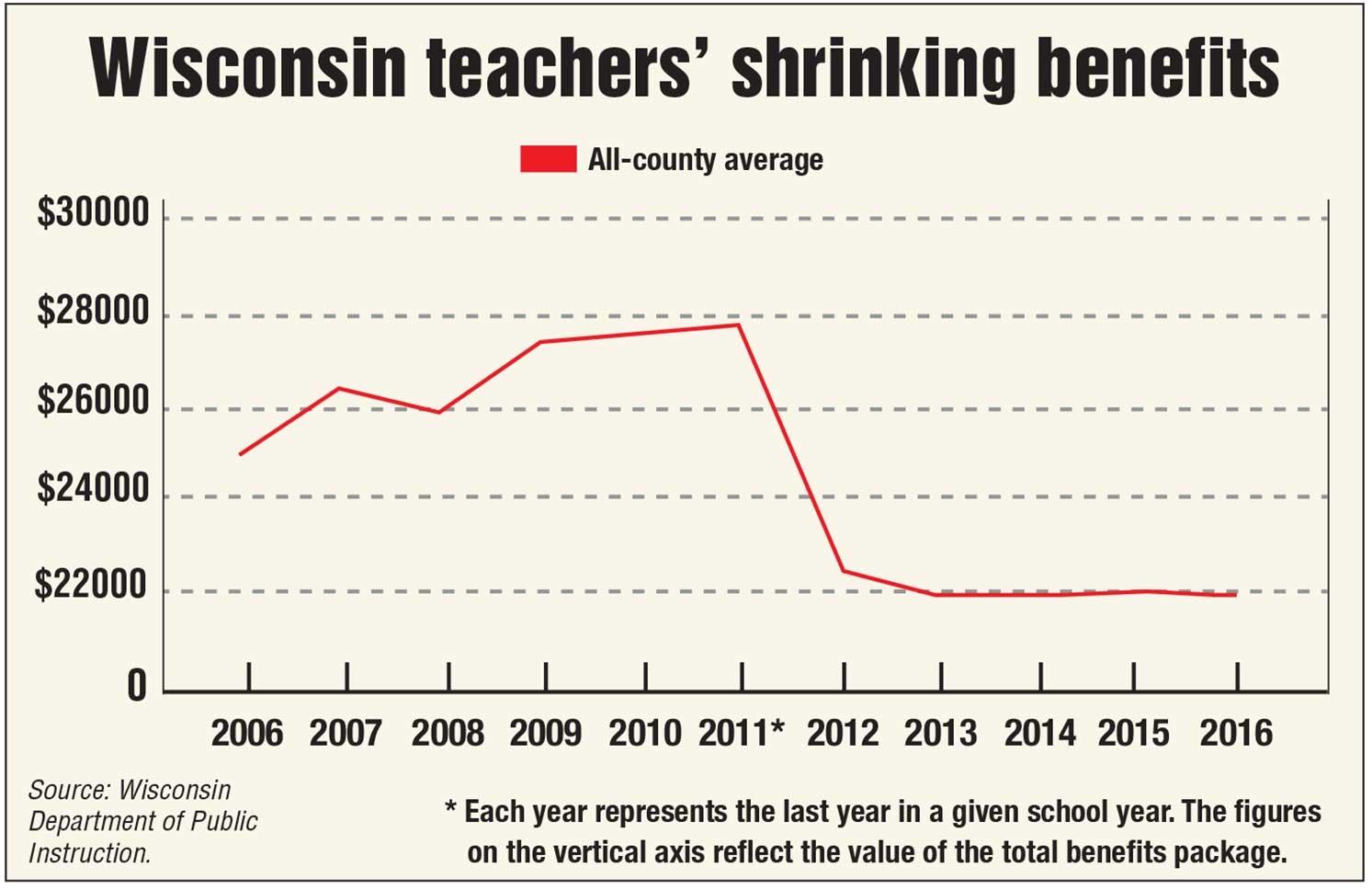Data

Public Education Spending
Compared to other states, Wisconsin does not receive much aid from the federal government. Overall, Wisconsin ranks “25th in spending and 24th in funding.”
-
- Wisconsin public K-12 schools receive $829.0 million in federal funding
- That’s about $965 per pupil from the federal government which ranked #36 in the nation
- State funding totals $5.54 billion or $6,447 per pupil.
- Local funding totals $5.47 billion or $6,368 per pupil.
- Total 2018-19 Funding ($12.25 billion) comes from:
- State aids: 47.9%
- Federal aids: 6.8%
- Property taxes: 40.7%
- Local revenue: 4.6%
- Per Pupil Expenditures
- K-12 schools in Wisconsin spend an average of $12,466 per pupil for a total of $10.71 billion annually
- This is low compared to a national average of $14,455 per pupil.
- The highest per pupil expenditures are in the Mineral Point Unified School District where students receive an average of $14,225 of funding per student
- Interestingly, this school district ranks 156th by average income
- The lowest is found in the Neillsville School District where students receive an average of $10,057 of funding per student
- K-12 schools in Wisconsin spend an average of $12,466 per pupil for a total of $10.71 billion annually
- Wisconsin public K-12 schools receive $829.0 million in federal funding
Sources:
https://educationdata.org/public-education-spending-statistics#wisconsin
https://wallethub.com/edu/e/most-least-equitable-school-districts-in-wisconsin/77146

Private vs. Public Schools in Wisconsin
- Enrollment by school type(2019-20)
- Total School-age Population 997,308
- Public Schools 854,959 (85.7%)
- 44,800 students of those students are in charter schools, accounting for 5.15% of the total population
- Private Schools 119,752 (12.0%)
- Homeschooled 21,644 (2.2%)
- Tribal Schools 953 (0.1%)
- Changes in School attendance during the Covid-19 pandemic
- During the 2020-2021 school year, public school enrollment shot down to about 814,000. This marks the largest single year decrease in enrollment in 25 years.

- Most of the drop in enrollment was in Pre-K enrollment

- During the 2020-2021 school year, private schools saw a drop in enrollment of about 1.5%, bringing it to its lowest point in at least a decade, according to the report.
- Homeschooling increased by 47 percent over the 2020-2021 school year
- Homeschooled students made up about 3.25 percent of Wisconsin students in 2020-21, up from 2.2 percent the year before.
- Enrollment in charter schools saw a tremendous increase, rising by about 14%.
- This growth is likely due to “an explosive 84 percent increase in virtual charter school enrollment,” which became available during the Covid-19 pandemic
- During the 2020-2021 school year, public school enrollment shot down to about 814,000. This marks the largest single year decrease in enrollment in 25 years.
- Wisconsin has the lowest private school tuition among states in which elementary school and secondary school data is available.
- $3,550 is the average tuition among all K-12 private schools in Wisconsin.
- $3,280 is the average cost of tuition at private elementary schools.
- $8,110 is the average cost of tuition at secondary schools.
Sources:
https://www.wpr.org/enrollment-dropped-private-and-public-schools-last-year-virtual-charters-homeschool-saw-gains
https://educationdata.org/public-education-spending-statistics#wisconsin
https://ballotpedia.org/Charter_schools_in_Wisconsin
 Student Demographics
Student Demographics
- Students with Disabilities 14.0%
- English Learners 6.0%
- Economically Disadvantaged Students 42.3%
- By Race
- White: 68.8%
- Black: 9%
- Asian: 4.1%
- Hispanic: 12.6%
- Two or More: 4.4%
- Other: 1.2%

- Graduation rates
- The Total Graduation Rate in Wisconsin is 88.6%
- National Average: 84.6%
- White: 92.7%
- Asian: 91%
- Black: 67%
- Hispanic: 80.3%
- Two or more Races: 84%
- Economically Disadvantaged: 77%
- Limited English Proficiency: 65%
- Students with Disabilities: 68.2%
- The Total Graduation Rate in Wisconsin is 88.6%

Sources: https://nces.ed.gov/ccd/tables/ACGR_RE_and_characteristics_2016-17.asp
https://dpi.wi.gov/sites/default/files/imce/eis/pdf/schools_at_a_glance.pdf

Accountability
- Wisconsin has different state and federal accountability systems.
- The State accountability system (the Accountability Report Cards, also known as the School and District Report Cards) are a rating system that ranks school and district outcomes across the performance spectrum.
- The State accountability system measures:
- Four Report Card Priority Areas:
- 1. Student Achievement (3-11)
- 2. School Growth (4-11)
- 3. Closing Gaps
- 4. On-Track & Post-secondary Readiness
- Plus two Student Engagement Indicators:
- 1. Chronic Absenteeism
- 2. Dropout Rate
- Four Report Card Priority Areas:
- The State accountability system measures:
- The federal accountability system identifies the lowest performing schools and student groups for support as required in the Every Student Succeeds Act (ESSA).
- The federal accountability system measures:
- Five ESSA Indicators:
- 1. Academic Achievement (3-8 and 11)
- 2. Student Growth (4-8)
- 3. Graduation (HS)
- 4. Progress in English Language Proficiency
- 5. Chronic Absenteeism
- Five ESSA Indicators:
- The federal ESSA accountability system ranks performance resulting in the following identification categories: Comprehensive Support and Improvement, Targeted Support and Improvement, Additional Targeted Support and Improvement, and Not Identified
- The federal accountability system measures:
- The State accountability system (the Accountability Report Cards, also known as the School and District Report Cards) are a rating system that ranks school and district outcomes across the performance spectrum.
-
- These measures are used to help coordinate improvement and support for failing schools
- Graduation Requirements for Students
- The state graduation requirements are the successful passing of a civics exam and 15 credits including:
- English/Language Arts – 4 Credits
- Math – 3 Credits
- Science – 3 Credits
- Social Studies – 3 Credits
- Physical Education – 1.5 credits
- Health – 0.5 credits (in grades 7-12)
- The state graduation requirements are the successful passing of a civics exam and 15 credits including:
- Wisconsin uses Common Core tests to evaluate student achievement in schools
https://dpi.wi.gov/sites/default/files/imce/accountability/pdf/State_vs_Federal_Accountability_Crosswalk_2018-19_Final.pdf
https://dpi.wi.gov/graduation/requirements
http://www.corestandards.org/assets/WI_Adoption_CCS_2_June_2010_dpinr2010_75.pdf

Teachers
- Average Public School Teacher salary in Wisconsin is around $59,176 (2019-2020)
- This is pretty close to the national average of $61,730, ranking Wisconsin as 21st in the nation
- Change in adjusted salary for teachers since 1999-2000: -5.4%
- Presence of teachers unions/collective bargaining
- Fewer than half of Wisconsin school districts have certified teachers unions
- In 2010, former governor Scott Walker passed Act 10 which largely eliminated collective bargaining rights for public employees.
- In the year following Act 10, teachers’ median benefits were cut by 18.6 percent and their median pay fell by 2.6 percent
- “By the 2015–16 school year, total teacher compensation was $10,843 lower — 12.6 percent less — than before the passage of Act 10.”

- Merit pay for teachers
- Since the powers of unions were curbed, Wisconsin has seen an increase in merit pay schemes
- In nearly 40% of districts in the state, some form of performance based pay is offered
Sources:
https://wisconsinexaminer.com/brief/wisconsins-union-presence-shrinks-dramatically-new-report-finds/
https://www.americanexperiment.org/wisconsin-teachers-earn-more-than-minnesota-teachers/#:~:text=NEA’s%20estimates%20for%202019%2D20,to%20strict%20union%20pay%20scales.
https://madison.com/news/local/govt-and-politics/fewer-than-half-of-wisconsin-school-districts-have-certified-teachers-unions/article_44e4b2e4-3ee5-5dc2-89c4-5219f53e720e.html
https://wispolicyforum.org/research/state-drop-in-unions-among-nations-largest/
https://www.businessinsider.com/teacher-salary-in-every-state-2018-4
Data Analysis:
After analyzing data for Wisconsin’s public education system, it is clear that inequalities exist. One statistic that immediately stood out was Wisconsin’s enormous graduation gap between black and white k-12 students. White students graduate high school at a rate of 92.7% while black students graduate a a rate of 67%. This staggering 25.7 percentage point difference is the largest gap of its kind in the country. Though the state skews white, Wisconsin’s demographics do not differ wildly from the nations overall ethnic and racial make up. However, the huge disparities between white students and black students is unique to Wisconsin. The national average for graduation rate for black students is 79.6%. Besides black students, the graduation rate for other ethnic groups are much closer to national averages. This begs the question; what about Wisconsin and its school system are causing catastrophically low graduation rates for black students?
Though Wisconsin’s graduation gap is particularly bad, disparities between outcome for white and black students is the norm in the United States. Many of the disparities can be diagnosed as the consequences of racist policies in the past. For example, banks red lined predominantly minority occupied areas and declared them hazardous for investment. As a result, black Americans where unable to get loans they needed to purchase housing and start businesses. Down the line, this meant that the property that black people could purchase was valued much lower, which made it difficult for them to build generational wealth. This disparity is exasperated because more than 40% of funding for all public schools in Wisconsin come from property taxes. This means that African American students who already come from disproportionately poor families also need to attend schools that are underfunded compared to their white counter parts in majority white districts. This leaves white affluent children with fully funded schools, while urban schools are left under funded. Wisconsin already has a relatively low per pupil funding from other sources meaning that a lack in property funding hurts students even more. One potential solution to help fix the gaps between black and white graduation are to shift away from a property tax based funding scheme and towards one where schools are funded more equally. Wisconsin is not perusing this solution, but they are trying to close achievement gaps. The Wisconsin Department of Public Instruction identifies that the state is focusing on bolstering student teacher relationships and family and community engagement. These may be less effective than usual strategies however because more and more public school teachers have been quitting Wisconsin schools ever since Act 10 removed many of their benefits and bargaining ability.
Current Events:
https://www.jsonline.com/story/news/education/2022/03/08/wisconsin-senate-votes-dissolve-mps-make-parental-bill-rights/9411187002/
https://www.jsonline.com/story/news/education/2022/02/18/mps-leaders-decry-darling-bill-dissolving-wisconsins-largest-district/6832200001/
Wisconsin State Senators passed a bills in March that would “dissolve Milwaukee public schools and overhaul many aspects of the k-12 education system.” Republicans in the senate argue that school districts should be broken down into smaller education pods in order to shake up current administrations and give parents more control over schools. These bills follow the wave of anti-public school conservative rhetoric that has been circulating around the country in recent months. Other bills approved would create private school vouchers, expand charter schools, create a “parental bill of rights,” and change the way the state evaluates public school performance. Opposing law makers are shocked at the lack of data and research that has gone into formulating these plans. In fact, Republican law makers did not even consult Milwaukee Public School leaders for advice. If they had, they would have found widespread disapproval. Public school leaders in the state are worried that drawing new districts would fence children off from the schools they currently attend. Many opponents of the new Republican legislation argue that it will make the de facto segregation that still persists even worse. They worry that making districts smaller will make parents choice of public school even more limited than it already is. Another concern is that expanding vouchers and charter schools will siphon funds away from already underfunded public schools. This will effect minority populations who are disproportionately stuck in poorer neighborhoods with worse funded schools the most. There are massive disparities between racial groups in Wisconsin. In order to close these gaps, the solution isn’t to further segment public schools and make them even more different from each other. The solution is to find ways to even the playing field across the board in all schools.
On top of worries about encouraging segregation, empowering parents more could do damage to Wisconsin public schools. Following Act 10 in 2010, the ability of public employees to collectively bargain was completely neutered. As shown above, this resulted in an immediate decrease in median pay and benefit for Wisconsin school teachers. As a result, the ability of Wisconsin public schools to retain teachers diminished. There was a “max exodus” of teachers. Because of this, less young people are becoming teachers and less are staying teachers than before. Opponents to the new conservative legislation circulating Wisconsin’s congress fear that empowering parents and breaking down current administrations could make the job even less appealing to young people than it already is. All the issues brought forward by the new legislation is even more insulting when you consider that it was passed a mere “hours after rejecting a plea… for more school aid.”
